Abstract
In 2023, Japan’s chicken population reached a remarkable 721 million birds, reflecting ongoing trends in poultry farming. Historically, large-scale producers with over 500,000 birds have played a significant role, emphasizing efficiency and productivity. This segment has expanded, driven by rising demand for poultry products, particularly in urban areas. Meanwhile, farms with 300,000 to 499,999 birds have also shown resilience, adapting to market demands and incorporating advanced farming techniques. These trends highlight a shift toward larger operations while smaller farms focus on niche markets, ensuring a diverse poultry industry that meets both consumer preferences and economic challenges.
Total number of broilers shipped
From 2013 to 2023, Japan’s chicken population has exhibited significant growth, culminating in a peak of 721 million birds in 2023, marking 100% of its maximum capacity. This upward trend reflects a shift towards large-scale poultry farming, driven by increased consumer demand for chicken products, particularly in urban markets. The industry has embraced modern farming techniques and biosecurity measures, enhancing productivity and efficiency. Additionally, there’s been a rise in health-conscious eating, prompting producers to focus on quality, such as organic and free-range options. As the market evolves, Japan’s poultry sector is adapting to meet both domestic consumption and global market trends.
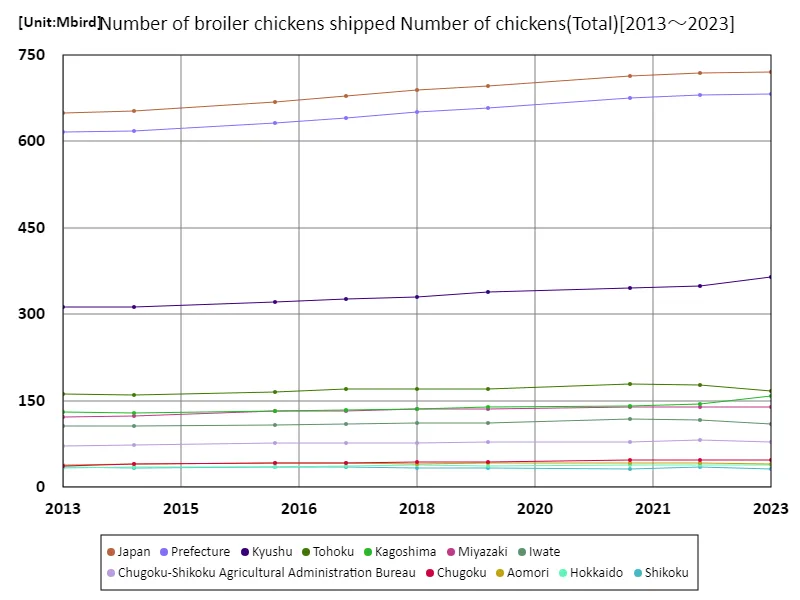

The maximum is the latest one, 721Mbird of Japan
Number of broilers shipped (prefectures, latest year)
In 2023, Kagoshima prefecture reached a remarkable milestone, recording 159 million chickens, the highest in Japan and representing 100% of its peak capacity. This achievement underscores Kagoshima’s prominence in the poultry industry, driven by favorable climate conditions and advanced farming practices. The region has focused on enhancing production efficiency, adopting modern technologies, and prioritizing animal welfare. Trends indicate a growing consumer preference for locally sourced poultry, fostering demand for Kagoshima’s products. As the industry evolves, the emphasis on quality and sustainability will likely shape the future of poultry farming in Kagoshima, reinforcing its leading position in Japanese agriculture.
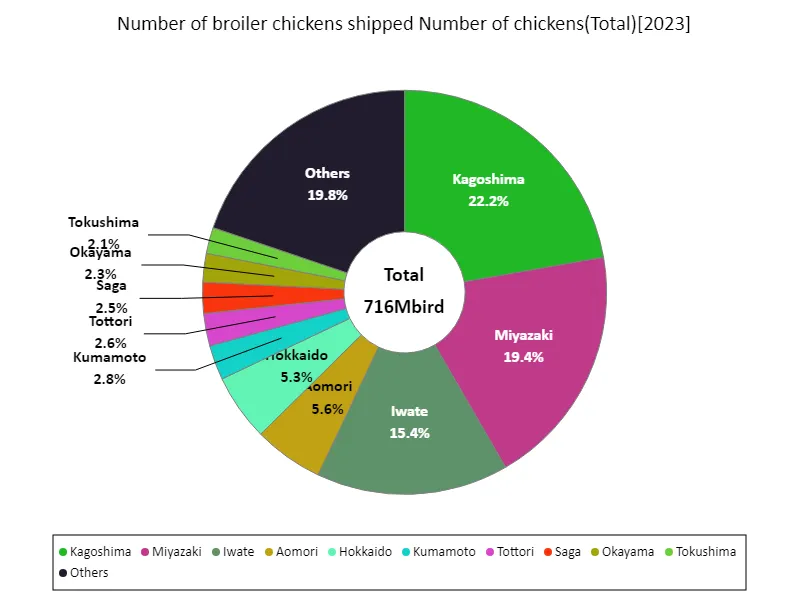

The maximum is 159Mbird of Kagoshima, the average is 19.9Mbird, and the total is 716Mbird
Number of broilers shipped (over 500,000)
In 2013, Japan’s poultry industry showcased significant dynamics, with a total of 1.33 billion chickens nationwide, and a maximum of 355 million birds. Farms with over 500,000 chickens represented a growing segment, reflecting a shift toward large-scale production driven by rising consumer demand. The average flock size stood at 40.2 million, indicating a trend toward consolidation as producers sought economies of scale. This shift has also facilitated the adoption of advanced farming techniques and improved biosecurity measures. As consumer preferences evolve, there is a heightened focus on quality and sustainability, suggesting that Japan’s poultry sector is adapting to meet both domestic needs and global market challenges.
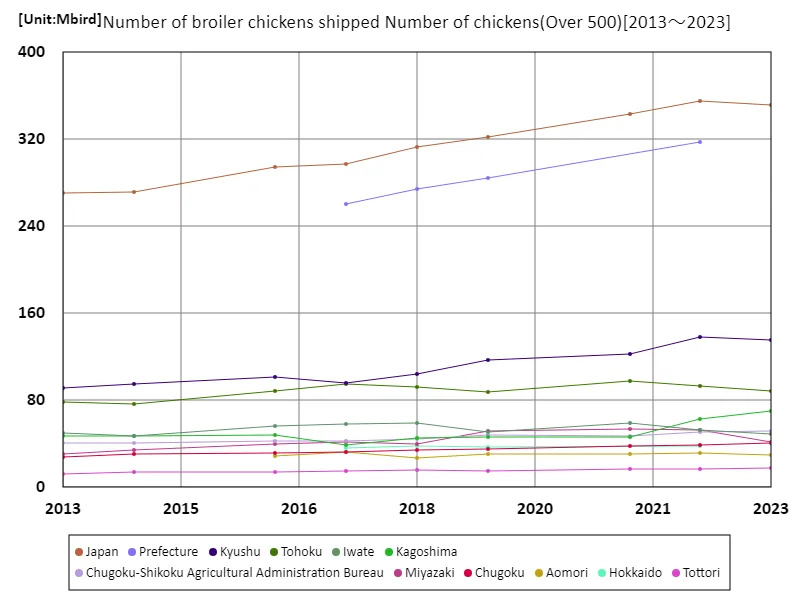

The maximum is 355Mbird[2022] of Japan, and the current value is about 98.8%
Number of broilers shipped (300,000 to 499,999)
In 2013, Japan’s poultry sector reported a maximum of 163 million broiler chickens shipped from farms with a scale of 300,000 to 499,999 birds, reflecting a stable segment within the industry. This size class has shown resilience, catering to both regional markets and niche demands for high-quality poultry products. The trend indicates a shift towards more efficient production practices, with these farms adopting modern technologies to enhance output and biosecurity. As consumer preferences lean towards locally sourced and sustainably raised poultry, this scale of production is well-positioned to adapt. The focus on quality, coupled with innovative farming techniques, suggests that this segment will continue to play a vital role in Japan’s agricultural landscape.
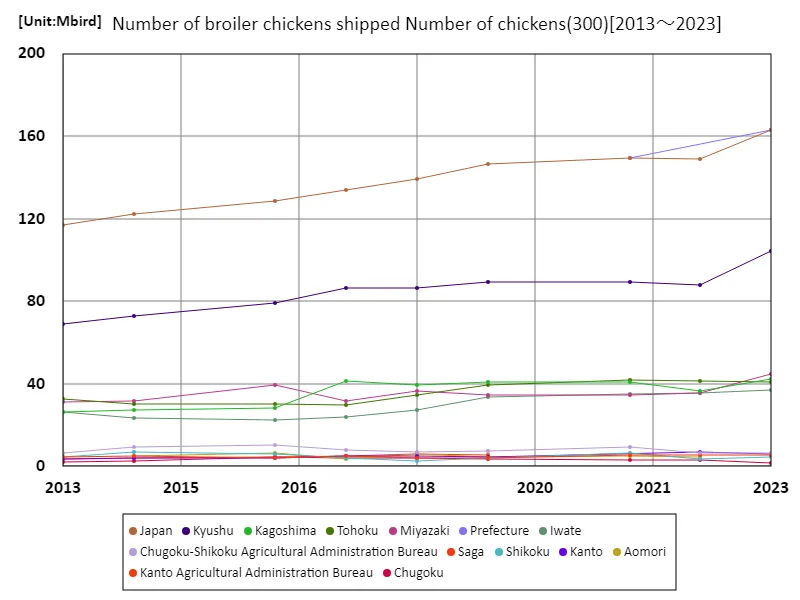

The maximum is the latest one, 163Mbird of Japan
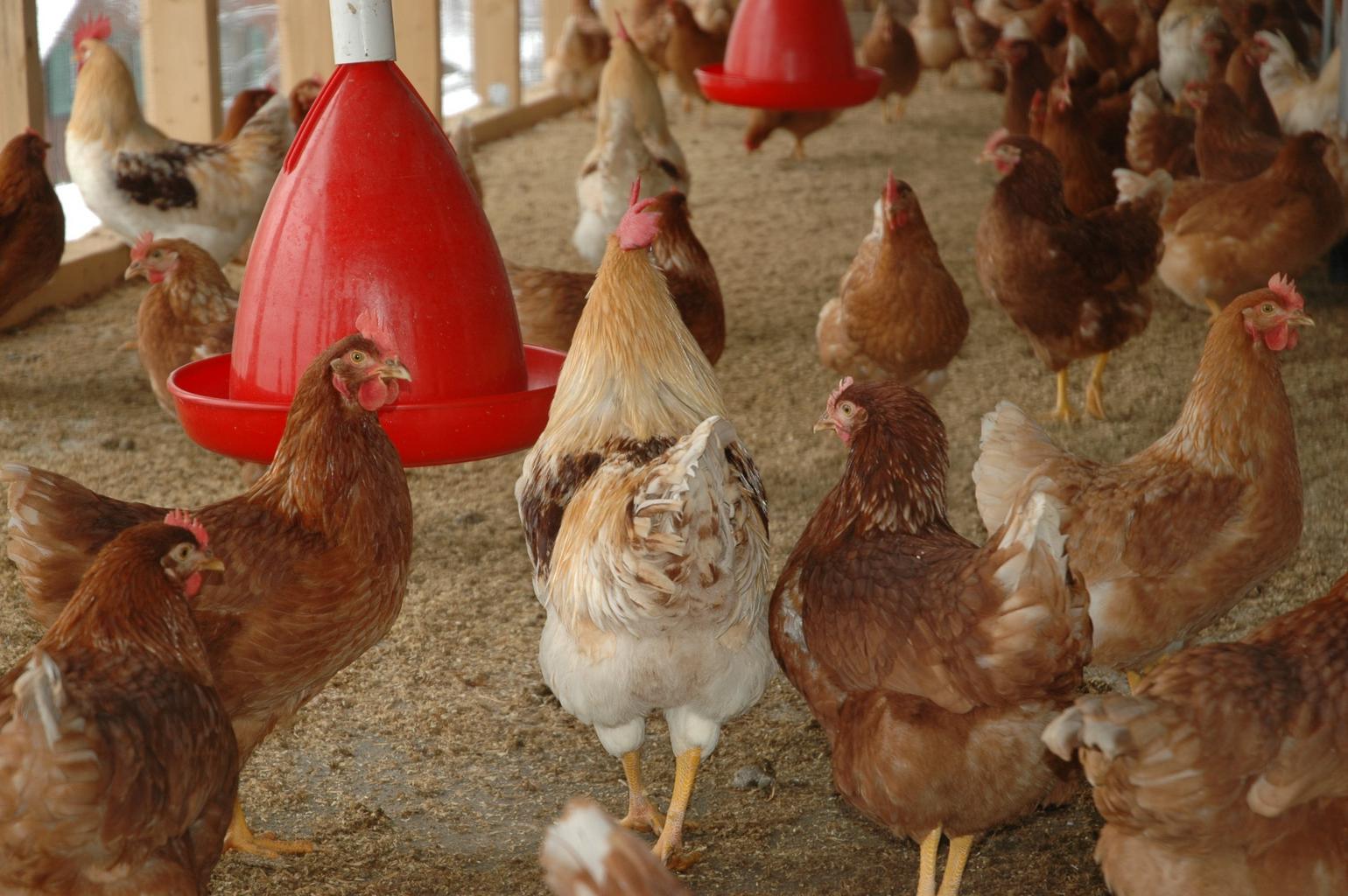


Comments